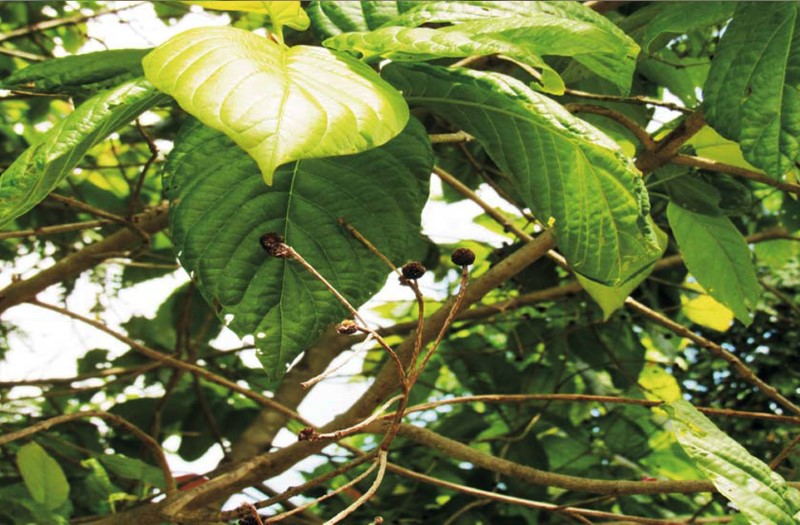Digital Garden
Trees of SN College Chempazhanthy:
Neolamarckia cadamba (Roxb.) Bosser.
കടമ്പ്
| Synonym: | Anthocephalus cadamba (Roxb.) Miq. |
| Family | Rubiaceae |
| Local Names: | Aattuthekku, Kadambu, Cadam, Kadam |
 |
|
Flowering and fruiting: April – August Distribution: Asia, Pacific and Australia Habitat: Along banks of rivers and streams in evergreen forests, also in the plains Uses: The fruit and inflorescences are reportedly edible. The dried bark is used to relieve fever and as a tonic. An extract of the leaves serves as a mouth gargle. The plant is considered to be astringent, digestive, expectorant and febrifuge. It is used in the treatment of conditions such as ulcers, digestive problems, fevers and vomiting. The fresh leaves are sometimes used as serviettes or plates. A yellow dye can be obtained from the root bark. They are an important raw material in the production of 'attar', which are Indian perfumes. The timber is used for plywood, light construction, pulp and paper, boxes and crates, dug-out canoes, and furniture components. Key Characters: Deciduous trees, to 20 m high, bark pale brown, vertically shallowly grooved. Leaves simple, opposite, decussate, ovate or elliptic-oblong, margin entire; stipules interpetiolar. Flowers bisexual, yellowish, in globose heads. Calyx tube globose, lobes 5. Corolla tube lobes 5, oblong. Stamens 5, anthers sagitate, sessile. Ovary 2-celled at base, 4-celled above, inferior, ovules many; stigma clavate. Fruit a capsule on a fleshy globose receptacle, orange yellow, capsule membranous; seeds may, angular, minute. |
|